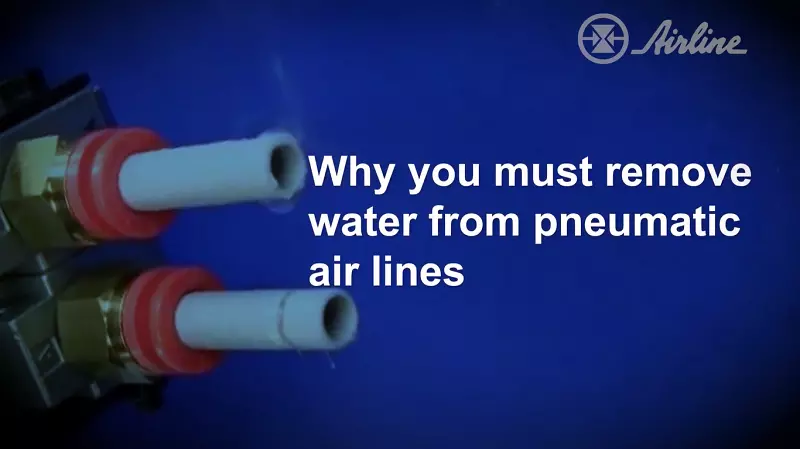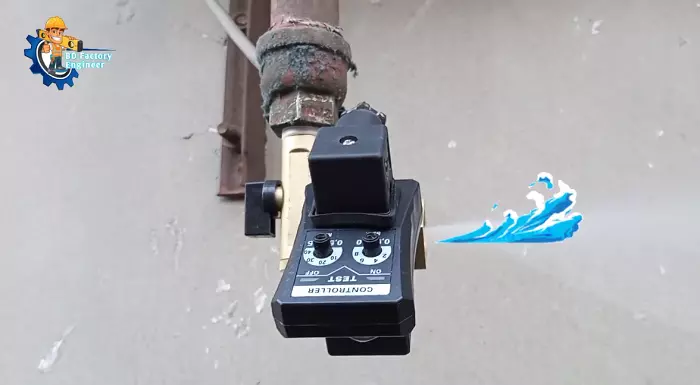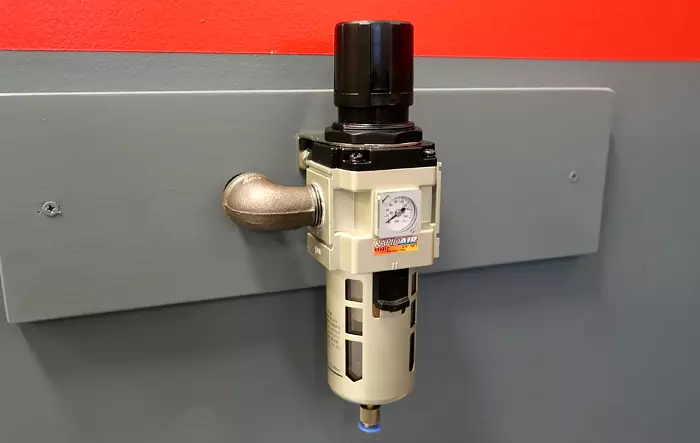
Is water coming out of air compressor hose? Then you want to read this article. This is very normal for all air compressors. The air that is compressed also contains water. This is because the air is made up of molecules, and these molecules contain both nitrogen and oxygen, as well as tiny amounts of other gases. When the air is compressed, the water molecules become more tightly packed together.
This problem becomes much worse during the summer when temperatures and humidity levels are at their highest enabling the air in the pneumatic lines to release the greatest amount of water. For example, a 25-horsepower compressor can release over 18 gallons of water in one day during the summer. You must make every effort to remove water from your pneumatic lines as water is not friendly to your pneumatic components.
Read Our Reviews:
The Reason Water Comes Out of Air Compressor Hose?
Air compressor owners sometimes complain about their unit to leak water through air hose. There are two possible explanations. Firstly, using the compressed air immediately without allowing the device enough time to be cool.
Let’s take a closer look at the science of air compression. When the air compressor compresses air, adding water vapor to the compressed air can occur. During this phase of air compression, the air remains warm enough. The hotter the air is, the greater the water vapor it contains. So, when utilizing the hot air immediately, the vapor comes out with air through the air hose.
Therefore, it is always advisable to let air be cool until the vapors form into drops of water and settle in the tank.
Secondly, when air tank is filled with too much water, it passes out through air hose. It is important to drain water as frequently as possible.
Now, the question is, what can you do to get rid of the problem? Here are some steps you should follow to keep your air compressor dry.
Steps To Fix
Step 1. Allow the compressor to be cool
As mentioned earlier, avoid powering your air tools just after the compression process. Let the unit rest for some time. The hot air contains a lot of vapors. When the temperature will go down, the water will condense and rest in the tank.
Step 2. Draining the compressor
Doing so many tasks, it is really challenging to pay extra attention for air compressor maintenance at the end of day. To get rid of the problem, you need not to break your back. Just loosen the drain valve and release all the water deposited in the tank. It will take no more than one minutes. This way, you can keep the tank dry completely. You will have no further issue of water leakage.

Electric Automatic Drain Valve
If you often forget to drain water, you may install automatic drain valve. The automatic water drain valve prevents the compressor from becoming flooded with water. The valve is opened when the water reaches a certain level in the tank, and it closes when the level drops below a certain point. This keeps the compressor from becoming overloaded with water and allows it to continue functioning properly.
Step 3. Check The Air Hose
If the air hose is long enough and you leave it the way it is after long use, it may contain some water. To make the hose water free, release some air for few seconds to make sure it's cleaned and dried well.
Step 4. Elevate The Air Hose
We usually keep the hose flat on surface while working. As a result the water easily passes through the hose pipe due to gravity force. So, implement a new method. Take a long hose pipe and keep the middle part of the hose at high position at around 5-7 feet. Now water will not be able to reach to that level of height.
Follow the steps previously mentioned, and it will greatly fix your problem by up to 40 percent. You need not to invest money to implement those techniques. If you are highly serious about the air quality and if you want air as free from moisture as is possible, you should consider paying some money.
Step 5. Buying Air Moisture Filter

The water separator filter in an air compressor is responsible for removing moisture from the compressed air. The compressed air is cooled as it passes through the filter, which causes the moisture to condense and collect on the surface of the filter. The water separator filter helps to ensure that the compressed air is free of moisture, which can cause corrosion and other damage to the tools you will be using.
So, use a filter and run the air through it. It will ensure your line will have no more moisture, and you get nothing but the air coming out of your air compressor.
For more delicate job, you may go for Refrigerated Air Dryers or Desiccant Air Dryers.
Step 6. Buying Refrigerated Air Dryers
Refrigerated air dryers are devices that use refrigeration to lower the temperature of air at 37 degrees Fahrenheit or 3 degrees Celsius, which causes the water vapor in the air to condense. This condensed water can be collected and removed from the air, which leaves the air drier.
The cooled air is then reheated and returned to the compressor system. Refrigerated air dryers are often used in industrial applications where large amounts of moisture need to be removed from the air.
Step 7. Buying Desiccant Air Dryers
If your are not satisfied with the dew point delivered from refrigerated dryer, Desiccant air dryers can satisfy you. Desiccant air dryers are used in air compressors to remove water vapor from the compressed air. The dryer contains chemical material named desiccant that absorbs water vapor from the air.
The dryer typically contains a rotating drum with a desiccant material coating the inside surface. As the compressed air passes over the desiccant, the water vapor is adsorbed and removed from the air. The dried compressed air is then released to the process or pipeline.
Check this drain valve from Ingersoll Rand
Ingersoll Rand Electronic Drain Valve automatically opens and closes based upon timer setting, making it easy to manage water drainage from the air compressor tank. This product is perfect for busy households that want a quick and easy way to manage the drainage system without having to worry about overflow or blockages.
This 110/120-volt electronic drain valve is the perfect choice for both residential and commercial applications. Plus, this valve requires just 10 watts of power to operate, making it an energy-efficient option for your home. It's built with metal for durability, and it comes with a 6-month warranty.
Check this 3-stage water separator filter
The EDGE INDUSTRIAL Air moisture Separator is the perfect solution to purifying and removing water from air in 3 stages. The separator features a high-efficiency particulate air (HEPA) filter to remove 99.97% of all particles down to 0.3 microns in size, a carbon filter to remove harmful gasses and odors, and an electronic dehumidifier to remove up to 95% of the water vapor from the air.
The Separator also includes a built-in gauge to help you monitor the pressure level range from 7 to 215 PSI and ensure optimal performance.
Conclusion
Don't get afraid if water comes out from the air compressor hose. Follow the steps I explained above, you will get your problem solved.
Frequently Asked Questions (FAQs)
How Do I Drain My Air Compressor After Use?
After use, most air compressors will require some form of draining. This is generally done by opening a valve at the bottom of the compressor that allows the water and oil to escape. Open the valve and allow the compressor to drain until all of the air and water has been released. If you turn on the motor, the water will start draining out of the machine quickly. You may put a bucket underneath to collect water. Once it's finished draining, just close the drain valve and you're ready to go.
How Frequently Should I Drain Water From Air Compressor?
It is recommended that the water be drained from the air compressor on a regular basis. This will help to keep the compressor running smoothly and reduce the chances of it overheating. The frequency at which you should drain the water will depend on how often you use the compressor and the type of climate you live in. In general, it is a good idea to drain the water every time you use the compressor.
What Happens if Water Goes to Pneumatic Tools?
If water were to enter a pneumatic tool, it would cease to function. Water can corrode the delicate internal mechanisms of a pneumatic tool, leading to a breakdown in the device. The water can also cause rusting on the metal parts of the tool, which can lead to further damage. In addition, water can create an electrical hazard if it comes into contact with the wiring in the tool.
How My Air Compressor Gets Filled With Water?
Water vapor is a natural by-product of the air compressor's operation. The compressor draws in air and compresses it, which causes the temperature of the air to rise. This hot air contains water vapor, which is why you often see water droplets coming out of the compressor. Some of the water vapor is condensed and collected inside the compressor, while some escapes through the exhaust port.
